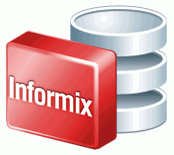IBM® Informix® Virtual Appliance Version 12.10

A virtual appliance is a pre-configured virtual desktop environment. The IBM Informix Virtual Appliance runs either locally on your host computer or remotely on a cloud or VMware Infrastructure environment. The IBM Informix Virtual Appliance features Informix database software and an assortment of development and productivity tools that are used to:
- Develop new applications
- Create Informix demonstrations and presentations
- Develop and test Informix applications
- Develop and deploy solutions for your customers
Launching the IBM Informix Virtual Appliance starts a Linux operating system instance that is pre-configured with Informix 12.10 and a host of productivity and development tools.
The IBM Informix Virtual Appliance contains all the required components for testing and developing software with Informix 12.10.
Post any questions or comments that are related to the IBM Informix Virtual Appliance in the IBM Informix DeveloperWorks Forum.
The edition of Informix included with the IBM Informix Virtual Appliance depends on the version you purchased. This documentation supports all Informix editions. The notes in the documentation indicate the Informix edition that is required for certain advanced features.
System requirements
- For UNIX, Linux, or Windows, either VMware Workstation 6.x or later or VMware Player 2.0.3, 2.5 or later must be installed on your host machine.
- For Mac OS X systems VMware Fusion is required.
- For remote access to VMware ESX or ESXi host machines, the VMware Infrastructure client is required.
The recommended amount of VMware Player memory allocation is 768 MB.
The IBM Informix Virtual Appliance provides a pre-configured, compressed virtual disk of 12 GB (maximum size), mounted as /. The appliance also comes with a compressed 8 GB virtual disk mounted as /data. These disks grow as needed during use of the appliance. If you experience performance problems, see Changing the VMware memory configuration.
System user IDs and passwords
- user root (default password: root): privileged Linux admin account
- user informix (default password: informix): the dedicated Informix database administrator (DBA) account
- user developer (default password: developer): regular, non-privileged user account
The command su or su – provides temporarily obtain root (super user) permissions. To switch between the three user accounts, use the su - username command. For example, to start or stop one of the Informix demonstration instances as user informix, invoke a subshell as user informix by typing su - informix. Then, run the appropriate scripts to create, start, stop, or remove Informix demonstration instances. When finished, exit the subshell by typing exit.
Product installation directories
Use this table to find the location of installed products.
| Product | Installation directory | More information |
|---|---|---|
| Informix database software | /opt/IBM/informix | |
| IBM OpenAdmin Tool (OAT) for Informix | /opt/IBM/OpenAdmin/OAT | OAT online help |
| Data Studio | /opt/IBM/DS2.2 | |
| Web DataBlade® | $INFORMIXDIR/extend | |
| PHP | Apache documentation root: /opt/IBM/OpenAdmin/OAT/Apache_2.2.16/htdocs | Using PHP with Informix |
| Apache Web Server | /opt/IBM/OpenAdmin/OAT/Apache_2.2.16 |
Installed software
The following products are preinstalled, pre-configured, and ready to run. See readme.txt for specific version information.
| Product | Description |
|---|---|
| IBM Informix database software | IBM Informix database software delivers exceptional reliability, scalability, ease of administration, online transaction processing (OLTP) performance, and a complete range of application development options. |
| IBM Informix Client SDK | A single packaging of several application programming interfaces (APIs) for rapid, cost-effective development of applications for IBM Informix servers. |
| IBM Informix JDBC Driver | A Java™ database connectivity (JDBC) driver -- the JavaSoft specification of a standard API that allows Java programs to access database management systems. |
| IBM Informix Spatial extension | Provides all the significant features and benefits of the IBM Informix to location-based data. Many key business decisions involve location and proximity. The Spatial extension enables organizations to transform both traditional and location-based data into important information to help gain a competitive advantage. |
| IBM Informix Web DataBlade | A collection of tools, functions, and examples that ease development of "intelligent," interactive, web-enabled database applications. |
| IBM Data Server Driver for JDBC/SQLJ | Provides support for client applications that are written in Java™ using JDBC. |
| IBM Data Server Driver for ODBC/CLI | Provides support for open source drivers for IBM Data Servers. |
| IBM OpenAdmin Tool (OAT) for Informix | Administers multiple database server instances from a single location. Some tasks that you can perform with OAT include: gathering and analyzing performance statistics, monitoring system health, defining and managing automated tasks through the SQL Administration API, creating and displaying performance histograms for analysis and tuning, and monitoring high availability solutions that include high-availability data replication (HDR), shared disk secondary servers, and remote stand-alone secondary servers. You can easily plug in your own extensions to OAT to create the functionality you need. |
| IBM Data Studio | Provides a rich set of integrated functions that allows you to perform database design, development, deployment, and management tasks. Using the workbench, you can develop and test routines; deploy data-centric web services; create, and then run SQL and XQuery queries; and develop Java applications that access databases or in-memory data. In addition, you can perform database administration tasks such as creating and altering database objects and managing privileges. Using the administration console, you can monitor the health and availability of databases, view dashboards, view alerts, and troubleshoot problems using expert recommendations. You can also monitor Q replication and event publishing, generate replication health reports, and perform basic replication operations. Eclipse C/C++, PHP, and Ruby on Rails plug-ins are not included. |
See First Steps for information about the tools and demonstration programs included with the IBM Informix Virtual Appliance.
 Release date: March 2013
Release date: March 2013